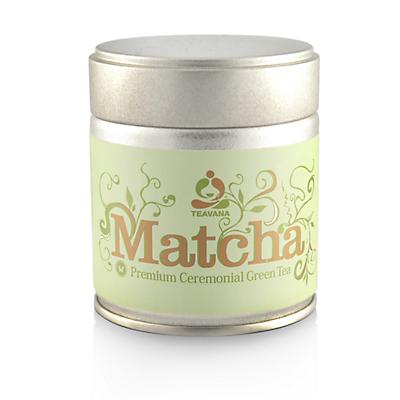Matcha – The Green Tea of All Green Teas

Matcha – The Green Tea of All Green Teas
For some, the idea of drinking a dark green beverage that has been mixed from a powder-like substance and tastes somewhat fishy, is not particularly appealing. But in fact, matcha is becoming one of the new trends for not only the health and beauty-conscious, but in the general market as well. Its appearance in such popular cafes as Starbucks, with the new Matcha Latte, is further proof of its increasing popularity. Tea bags watch out, there’s a new way of drinking the green antioxidant beverage and it doesn’t involve steeping.

Matcha has its origins in ancient Japan, being the popular drink of the famous geisha tea houses. The traditional serving of matcha is a learned art of the geisha culture and tourists in cities such as Kyoto can pay costly amounts to attend shows where they watch these beautiful, doll-like women serve the tea in its traditional ceremony. Or they can spend even more to actually go to a traditional tea houses and be served a cup of matcha with some sweet traditional Japanese pastries.

So what exactly is matcha and why all the fuss? Simply put, matcha is the green tea of all green teas. It is the earliest harvesting of the young green tea leaves and the pulverizing of them into a fine green powder which is then stored in small tins and sold in the fine tea shops all over Japan. A small amount of this powder is then mixed (using a special wooden mixer which somewhat resembles a small egg beater) with a small amount of warm (but certainly not boiling as this destroys the properties of the tea) in a small bowl, until creating almost a frothy liquid. The mixture is then added to the remainder of warm water and voila– matcha!

Traditionally the tea is not served with sugar, but accompanied by a sweet treat or chocolate. It may result quite bitter and almost fishy to some first-timers, as the taste is definitely an acquired pleasure. Adding to some foreigners’ shock may be the round, white sweet bean-filled pastries traditionally served with matcha in Kyoto. But, in fact, matcha is indeed a developed pleasure and after a few servings, the flavor definitely is acquired.

In Japan, matcha is as common a flavor as chocolate or strawberry. In supermarkets it is common to see the dark green powder as a topping or flavor for everything from ice cream to cakes to chocolate bars (ever try a matcha flavored Kit Kat bar?) In Japanese Starbucks, it is common to see young girls drinking Matcha Frappuchinos or businessmen ordering a matcha latte. But will the rest of the world be susceptible to this powdery green tea?

To find out the answer, check out one of your local tea and coffee specialty stores. Chances are they already have tins of matcha on their shelves. And chances are they are top sellers, despite the high cost (even in Japan these little tins are not cheap, about five times the cost of green tea sold in bags). And for more proof, check out the internet sites that are dedicated to the sales of matcha overseas…there are many! What is it about matcha that has foreigners scooping it into their mugs as well?

Perhaps it is the fact that matcha has some double the antioxidants of green tea in bags. Or the fact that Japanese women swear by its skin-rejuvenating powers. Or simply the trendiness of drinking tea out of a charming little metallic tin with a floral Japanese design on it. Whatever the reason, little paper tea bag beware…there’s a new tea in town.


Matcha Green Tea

0 comments:
Post a Comment